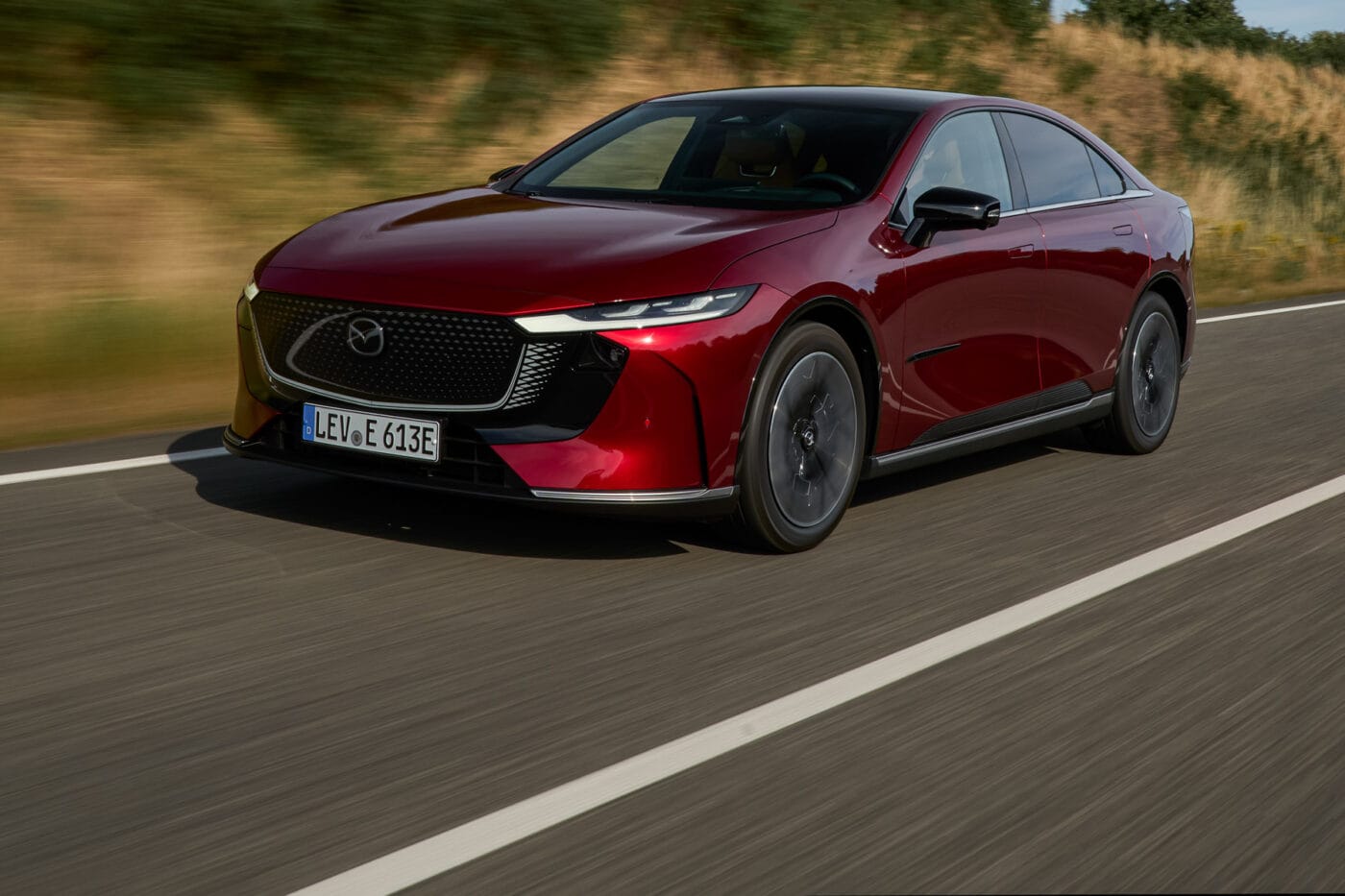
First drive in the Mazda6e: A successful step into the future
Even in the combustion engine era, Mazda was known for its partly very distinctive technical solutions. Hardly any manufacturer developed the Wankel engine as far as Mazda did. While the industry increasingly relied on smaller turbocharged petrol engines, Mazda launched new naturally aspirated engines with unusually high compression ratios. For their first electric car, however, the Japanese company wanted to be pioneers of the downsizing trend and gave the MX-30 a relatively small battery, because cars generally only cover a few kilometres a day anyway. This is factually correct, but psychologically questionable, and in times of lingering range anxiety, it failed to convince customers.
The second step into electric mobility is much more conventional, without being old-fashioned. With the Mazda6e, the carmaker electrified its mid-size segment. And it comes with a design that clearly shows electrification has arrived at the heart of the Mazda model range. The 6e basically looks like what a current combustion-engine Mazda saloon would probably look like, except for the closed radiator grille at the front. There have been three generations of the Mazda6 since 2002, with more than four million units sold. But the third generation, offered since 2012, was probably the last with an internal combustion engine.
It’s no surprise, then, that at the launch event it was described as “strategically very important.” After all, the first Mazda6 in 2002 marked a major milestone in the brand’s design and quality. The hope at Mazda’s combined European and German headquarters in Leverkusen is high that in a few years, people will look back on the new Mazda6e in a similar way as a milestone on the road to electrification.
But can Mazda succeed with this car? No question, the car looks smart, dynamic, modern and yet somehow familiar. This is also because the 6e has relatively conventional proportions: A long, flat bonnet flows into a gently curved roofline, with only the rear perhaps a bit high.
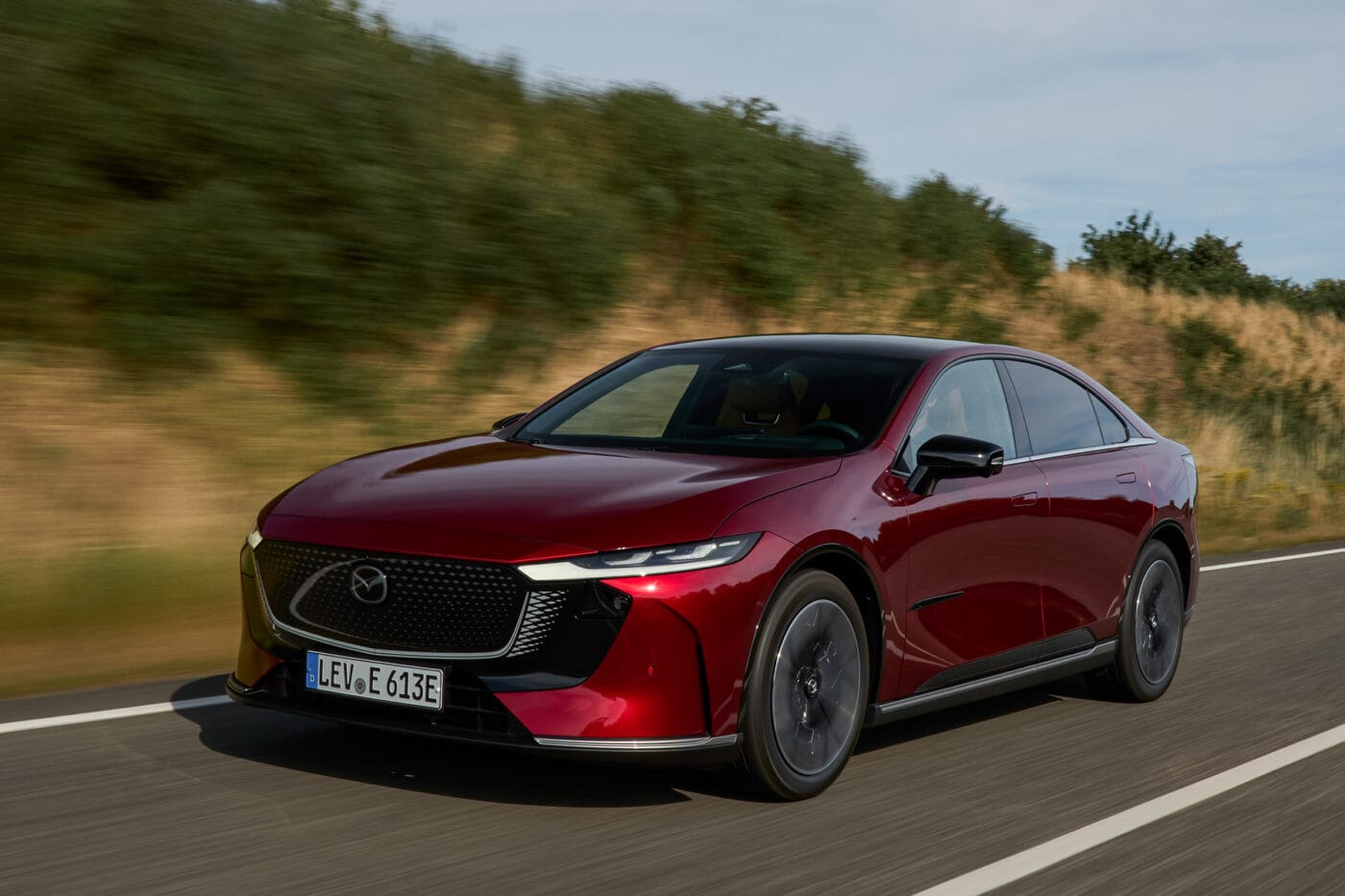
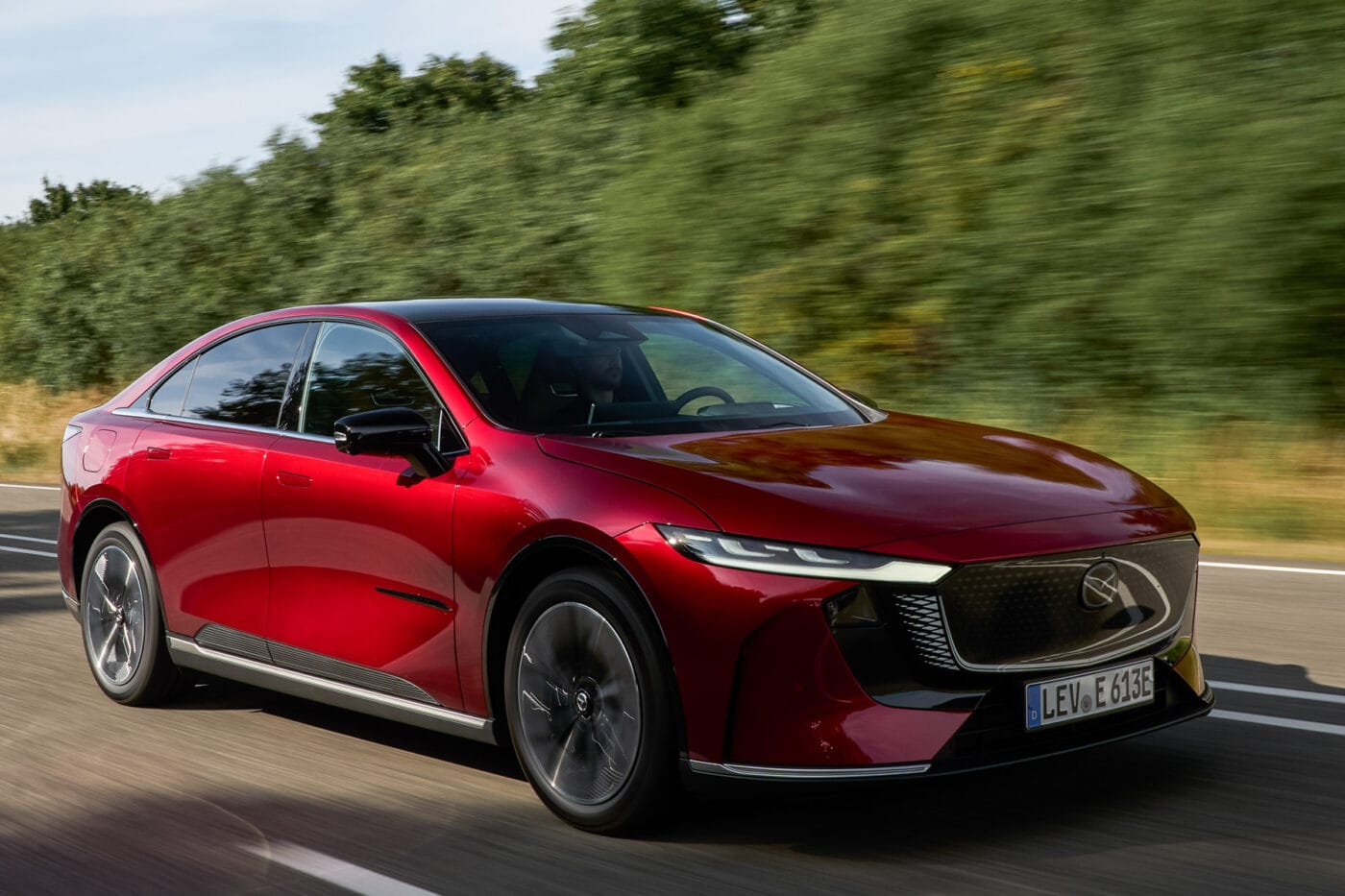
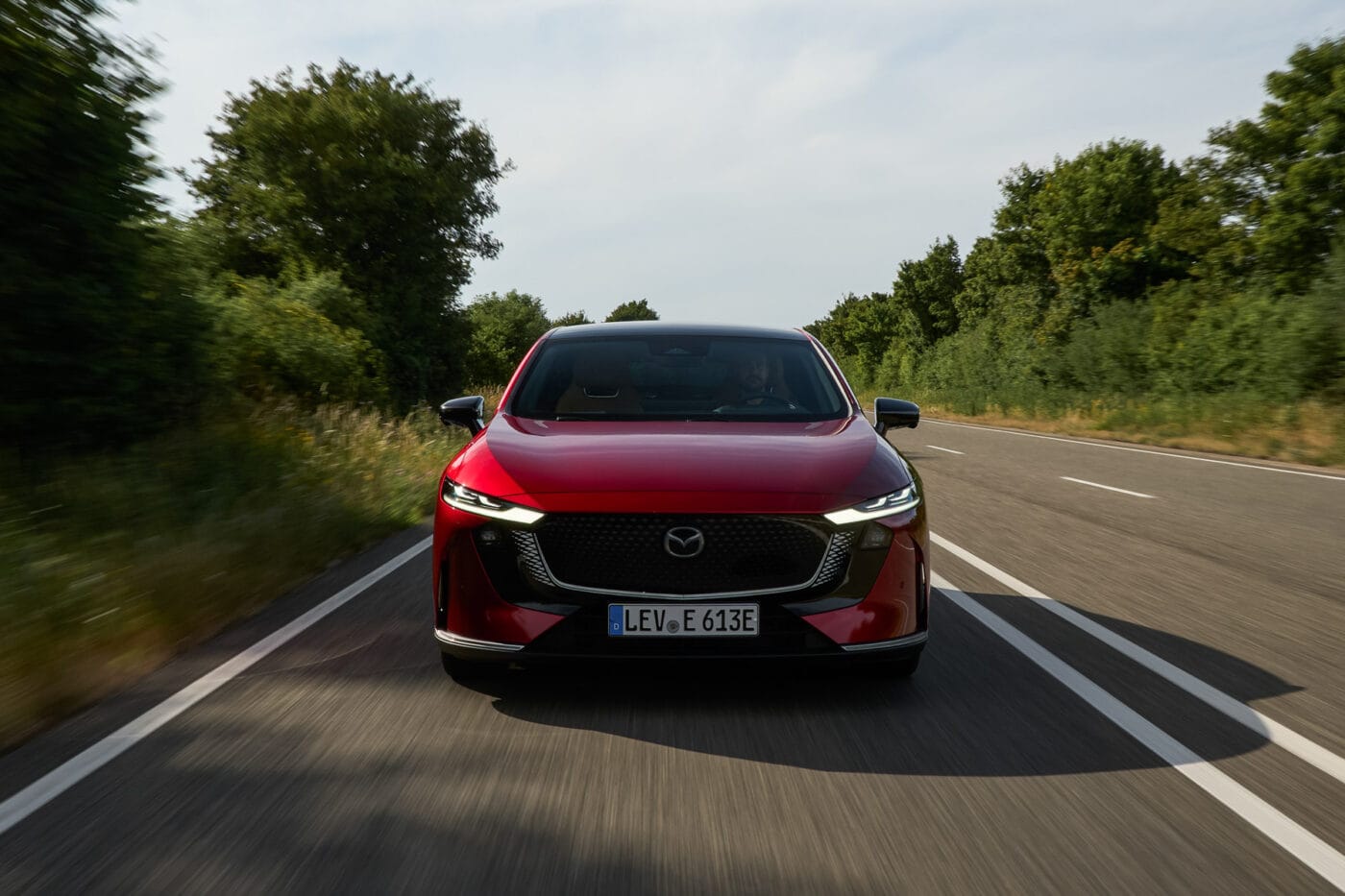
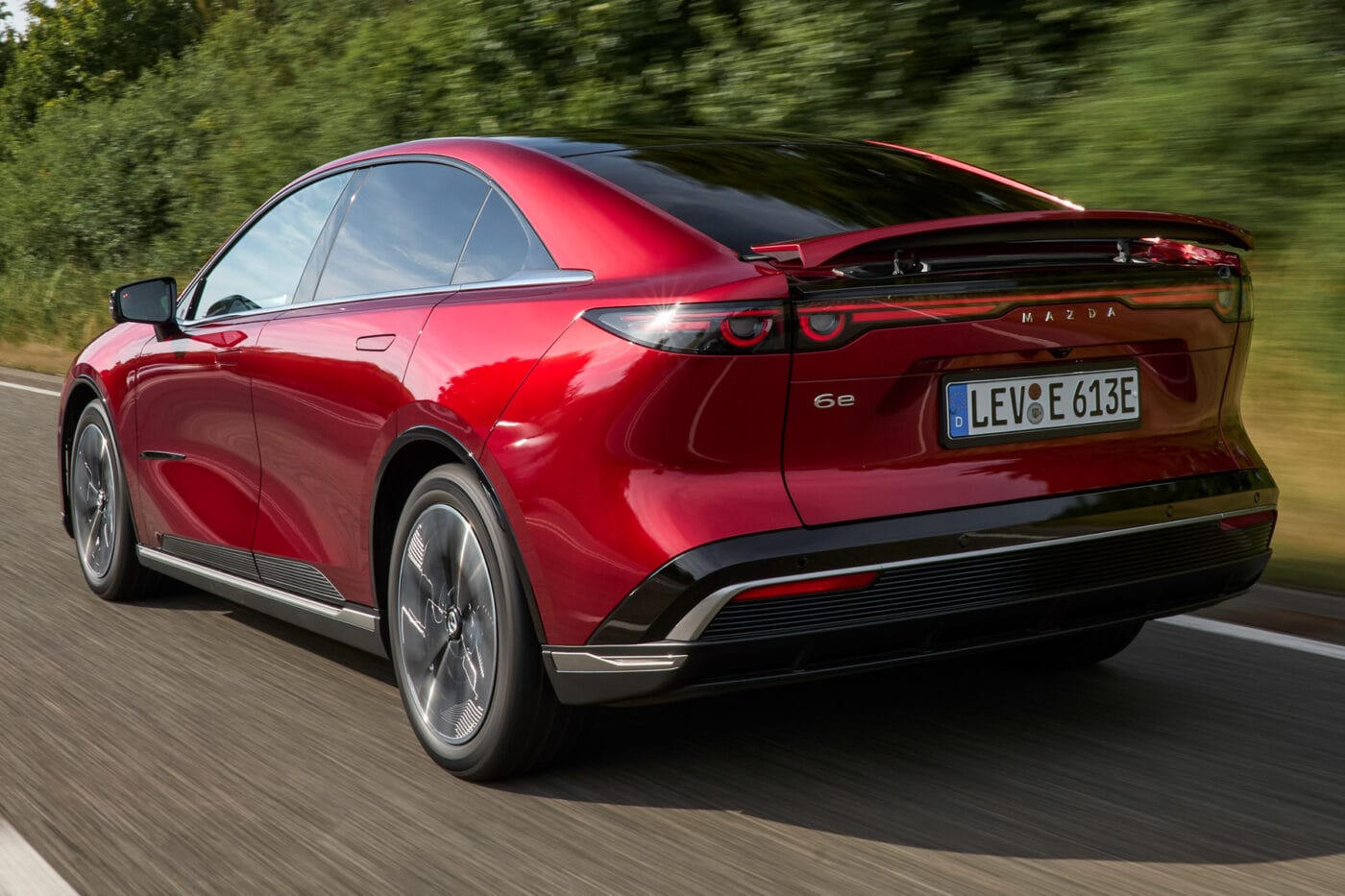
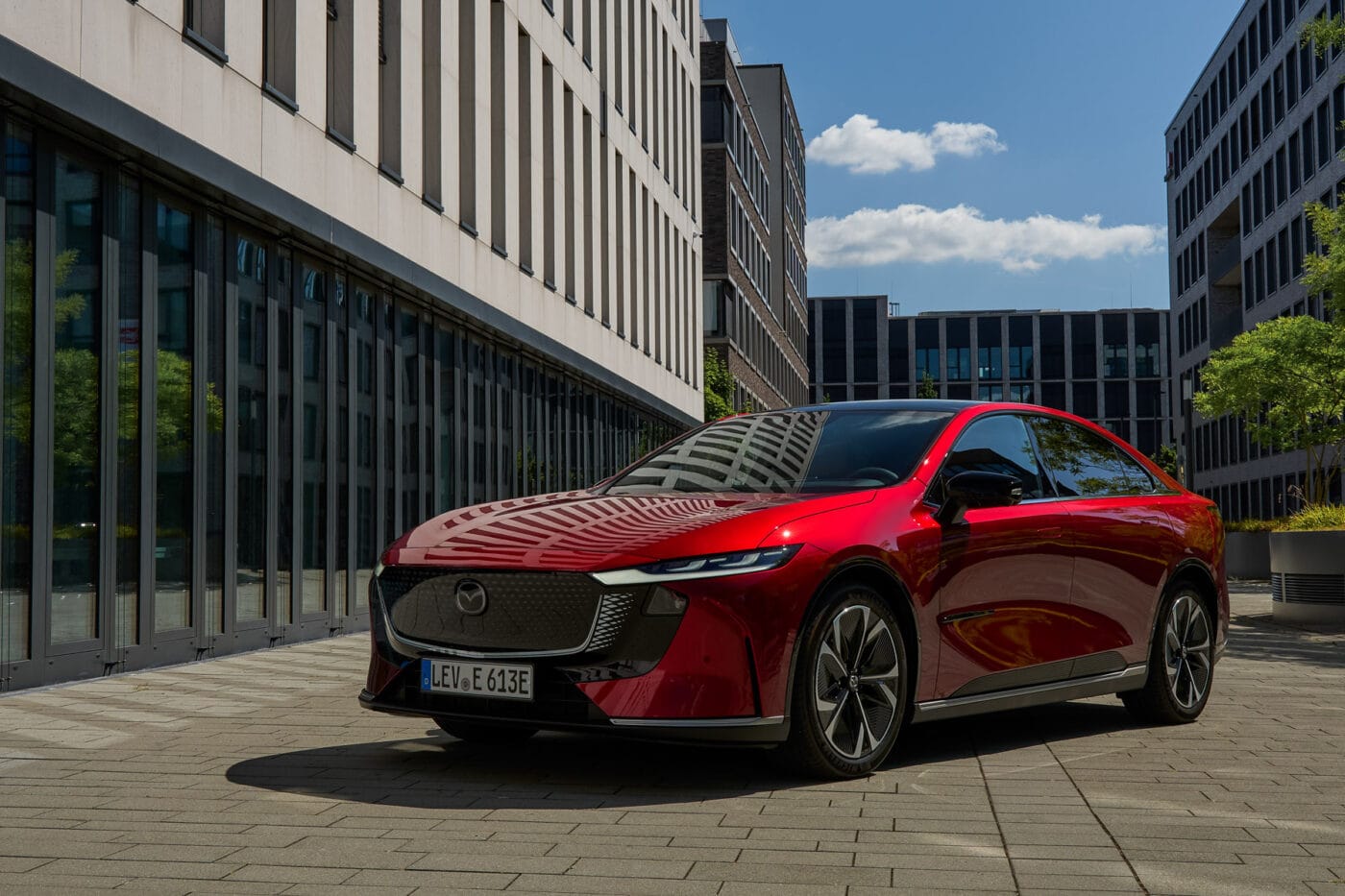
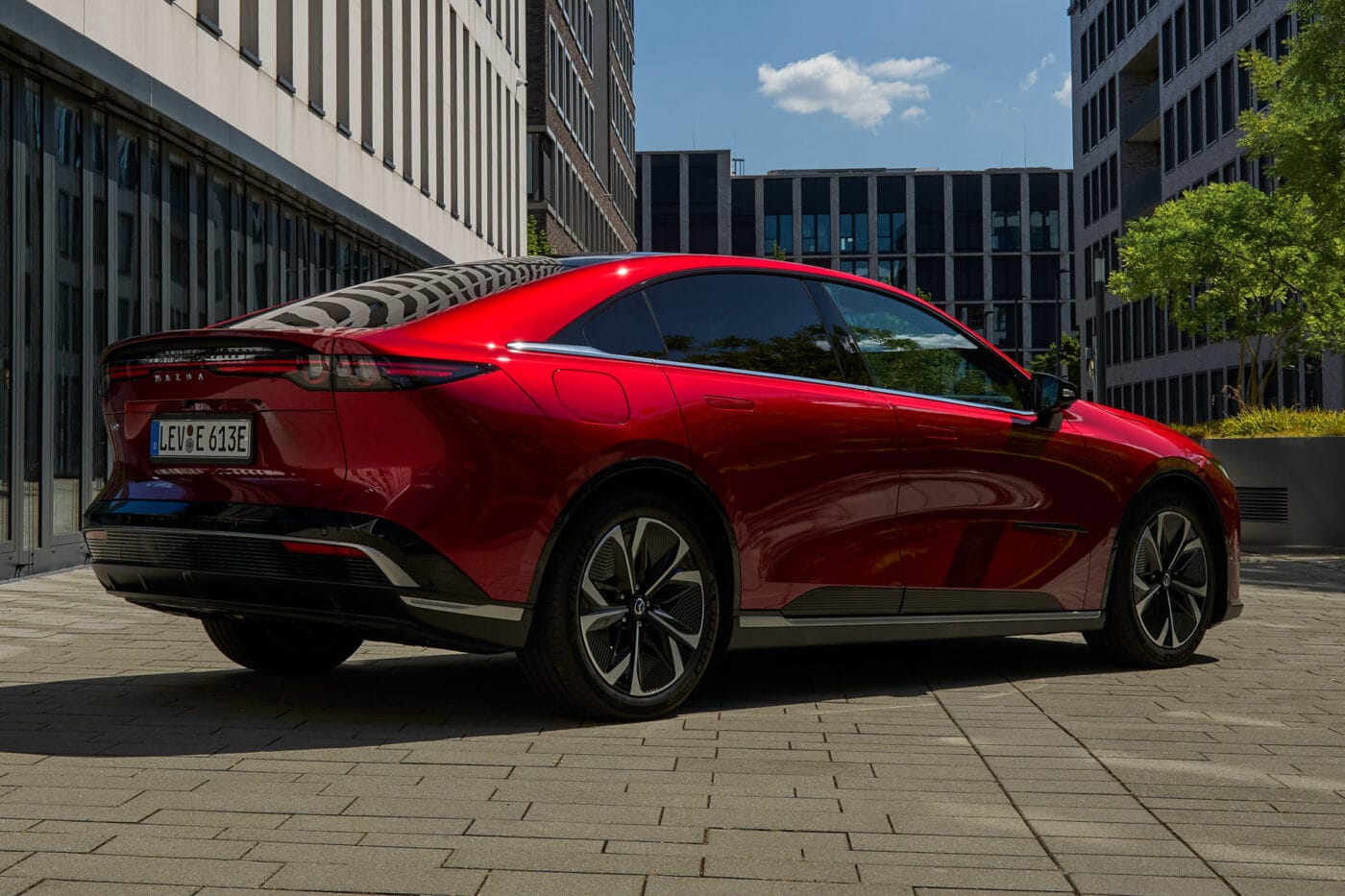
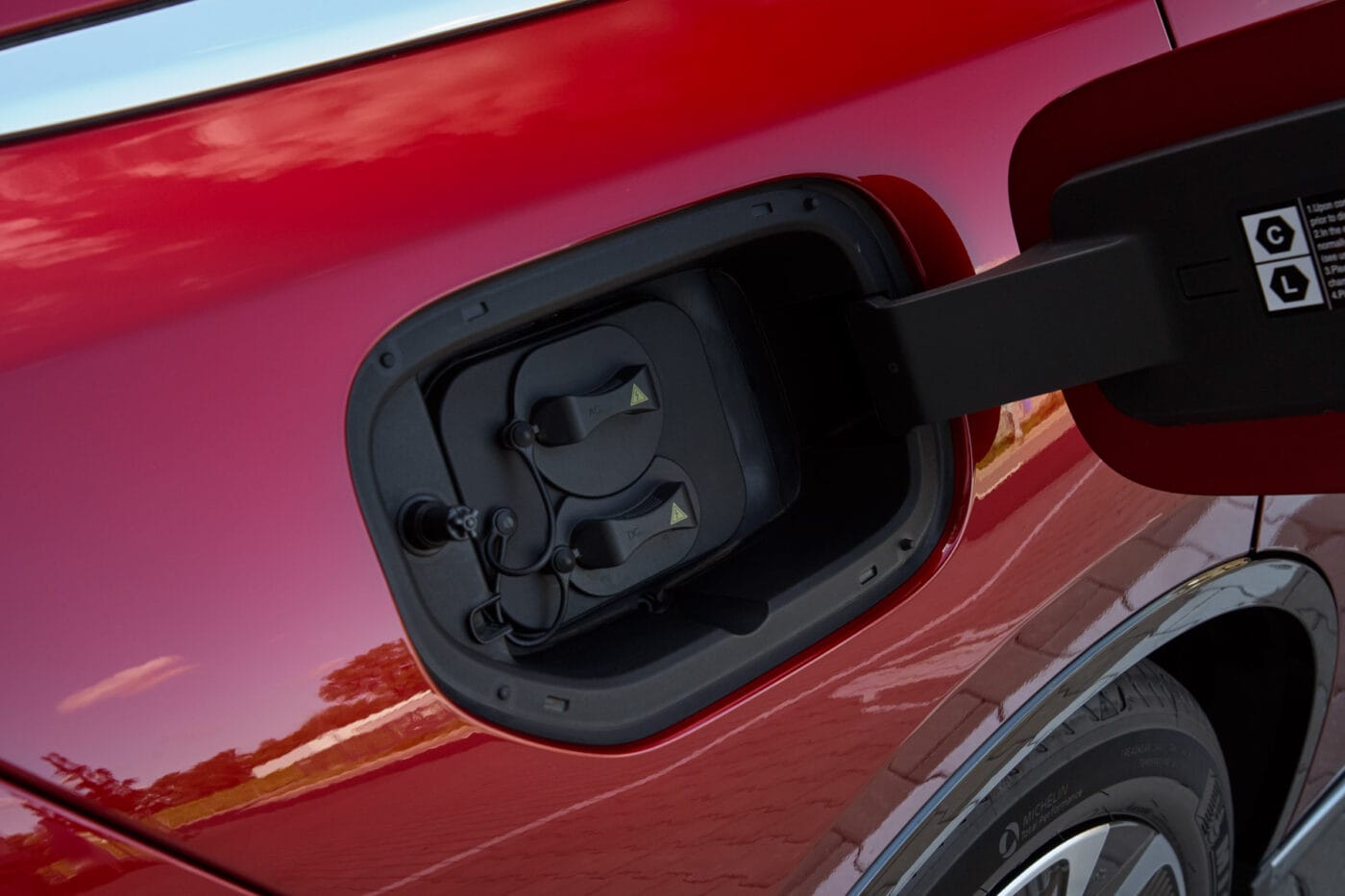
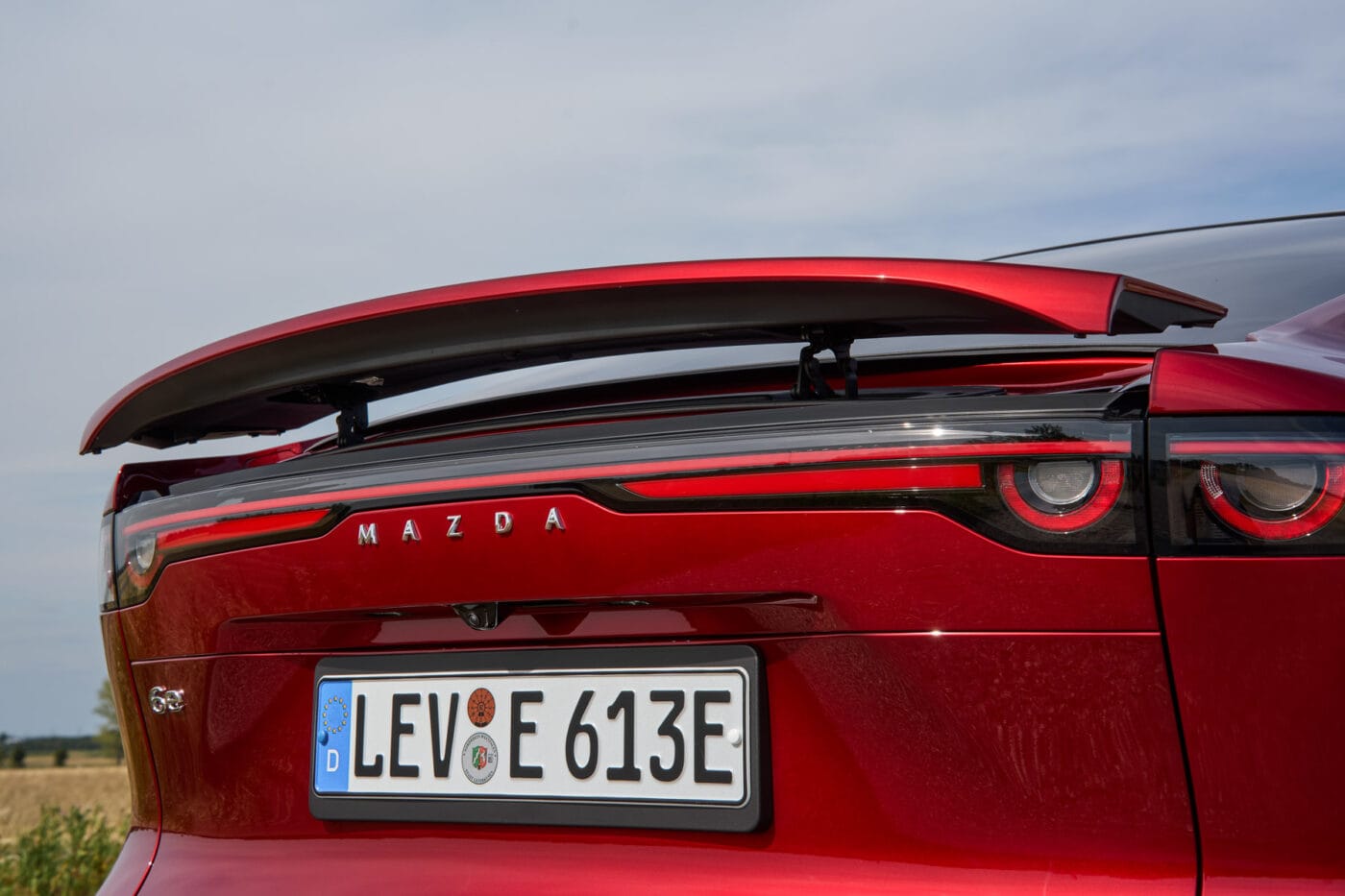
But overall, the 6e looks more familiar to the eye than many other electric saloons, which tend to be taller due to the underfloor batteries (like the VW ID.7), or which use their long wheelbase and short overhangs to optimise space but look unusual, like the Mercedes EQE or EQS. Mazda has found a middle ground here, combining a wheelbase of 2.90 metres with conventional saloon proportions. And unlike BMW models, the long bonnet of the Mazda6e isn’t wasted space: underneath it sits a 72-litre front boot (‘frunk’) that can hold much more than just the charging cable.
Yet Mazda has taken new paths with the 6e: The car is no longer built in Japan, but in cooperation with the Chinese joint venture partner Changan. It is based on Changan’s EPA1 architecture and was first presented at Auto China in Beijing in April 2024. In China, the model – called Mazda EZ-6 there – is available not only as a battery electric vehicle but also as an EREV. That option is not offered in Europe, where the fully electric drivetrain is intended to do the job. Later this year, the Deepal S07, which uses the same technical base, will probably try its luck in Germany, but as an electric SUV.
Interior: all new, yet familiar
Enough preamble, let’s get behind the wheel. Sitting in the driver’s seat confirms our first impression from outside. Many elements are new or newly interpreted, such as the two-spoke steering wheel or the central 14.6-inch touchscreen, which acts as the control centre for almost all functions – something new for Mazda. On the other hand, Mazda’s typical focus on design and material selection is clear. In our test car with the top ‘Takumi Plus’ trim, many surfaces in the centre console and doors are covered with a very pleasant and soft velour leather imitation. This is a stark contrast to the hard plastic door trims of many VW MEB models. The Mazda6e feels noticeably more premium and homely inside.
Mazda has dispensed with a start button – just get in, buckle up, press the brake and select the gear. The operation logic also resembles Tesla. The right stalk selects the gear, pressing it again activates the driving assistants. On the left of the steering wheel is only the indicator stalk, which also integrates a button for the windscreen wipers. The inspiration is clear, but not bad.
On the road, the Mazda6e is relatively quiet; noise insulation remains good even at motorway speeds. Even standard driver aids, like the frequently criticised speed assist, work quietly here: The beeps are noticeable but not annoying. This really adds value, since a nagging assistant that is switched off before every journey isn’t a safety gain. Mazda has solved this well.
Mazda, traditionally valuing driving pleasure, calls the handling “sporty and balanced.” After about 100 kilometres through the low mountain range in western Germany, I’d say that’s true, but with a strong emphasis on “balanced.” The 6e rolls comfortably along the motorway at 4.92 metres long and a 2.90-metre wheelbase, absorbs bumps on country roads smoothly and stays comfortable throughout. The steering offers sufficient but not outstanding feedback and is rather light.
The ‘Sport’ driving mode, which provides more steering resistance and different recuperation compared to ‘Normal,’ doesn’t change this much. The differences in steering feel are slight; other cars have wider variances between modes. Recuperation is also quite subtle, even on ‘High’ in ‘Individual’ mode. One-pedal driving is not possible. However, all modes on our pre-production test cars were well calibrated. Recuperation is mild but very controllable. An important feature is the ‘Driving Mode Memory’, which can be enabled in the menu, so the car always starts in the last selected driving mode rather than ‘Normal’. Drivers who prefer their ‘Individual’ or ‘Sport’ mode don’t need to switch manually each time.
The Mazda6e brings good conditions for sporty yet balanced driving. The motor is always at the rear, the underfloor battery provides a low centre of gravity, and the weight distribution is nearly balanced at 47:53 per cent, slightly rear-biased. With 190 kW, the 6e is well powered but not overpowered: 320 Nm of torque pushes it from zero to 62 mph (100 kph) in 7.6 seconds, with a top speed of 175 kph. A VW ID.7, four centimetres longer, offers 210 kW and significantly more torque at 545 Nm. The Mazda would likely lose in a direct comparison on the test track. However, on a country road alone, you won’t miss anything.
| Mazda6e | Mazda6e Long Range | |
|---|---|---|
| Drive | RWD | RWD |
| Power | 190 kW | 180 kW |
| Torque | 320 Nm | 320 Nm |
| Acceleration | 7.6 s | 7.8 s |
| Top speed | 175 kph | 175 kph |
| WLTP range | 479 km | 552 km |
| Battery | 68.8 kWh | 80 kWh |
| Charging capacity DC | 165 kW | 90 kW |
| Charging time DC 10-80% | 27 min | 47 min |
| Price (Germany) | 44,900 euros | 46,500 euros |
Despite testing various driving modes, the average consumption over 104 kilometres was 14.1 kWh/100 km according to the onboard computer, including motorway sections at 150 kph and a few test accelerations unlikely in everyday driving. So, even lower consumption would have been possible! We used 21 per cent of the battery (from 97 to 76 per cent), which roughly translates into a 500-kilometre range. The WLTP range of the 68.8 kWh LFP battery we tested is 479 kilometres. Drivers who stay relaxed and consume around 13–14 kWh/100 km can realistically achieve the WLTP range on the road.
With its good consumption, the Mazda6e compensates somewhat for having a smaller battery than competitors; the ID.7 has between 77 and 86 kWh. With a peak charging power of 165 kW and a charging time of 24 minutes from 10 to 80 per cent, the 6e also stands well among its peers. The Hyundai Ioniq 6, with its 800-volt system, charges faster, while the ID.7 takes slightly longer. Important for an LFP battery: Battery heating can be manually activated, though somewhat hidden in the energy management menu. The navigation system offers automatic charging planning with an adjustable desired residual charge at arrival, and wireless Apple CarPlay or Android Auto allow navigation with other apps like Google Maps.
Questionable ‘Long Range’ model
The battery also reveals Mazda hasn’t entirely abandoned or doesn’t want to abandon its very own technical solutions: Besides the 68.6 kWh LFP battery in the model we drove, there is a Mazda6e Long Range with an 80 kWh battery and 552 kilometres WLTP range. However, this model’s long-distance suitability is limited, as maximum charging power is only 90 kW, and standard charging takes a hefty 47 minutes! Mazda PR explains the Long Range battery is aimed at customers who want a few extra kilometres but don’t often charge externally. This may be true, but that target group is probably very niche. The potential group who would want a Long Range battery with the same 24-minute charging time is much larger. Mazda Germany also expects the Long Range to sell less: 90 per cent of local sales will be the (more attractive) LFP battery.
The LFP variant starts at 44,900 euros in the already well-equipped ‘Takumi’ trim and from 46,900 euros in the ‘Takumi Plus’ we tested; the Long Range is 2,000 euros more expensive. The nearly €45,000 base price sounds high, but must be put in context. The technically outdated third-generation Mazda6 saloon with a 194 hp petrol engine in ‘Takumi’ trim starts at €49,600, so the more modern electric car is actually cheaper! The petrol model does have variants with less power and equipment, starting at about €35,000. We hope Mazda will offer simpler trims for the 6e later.
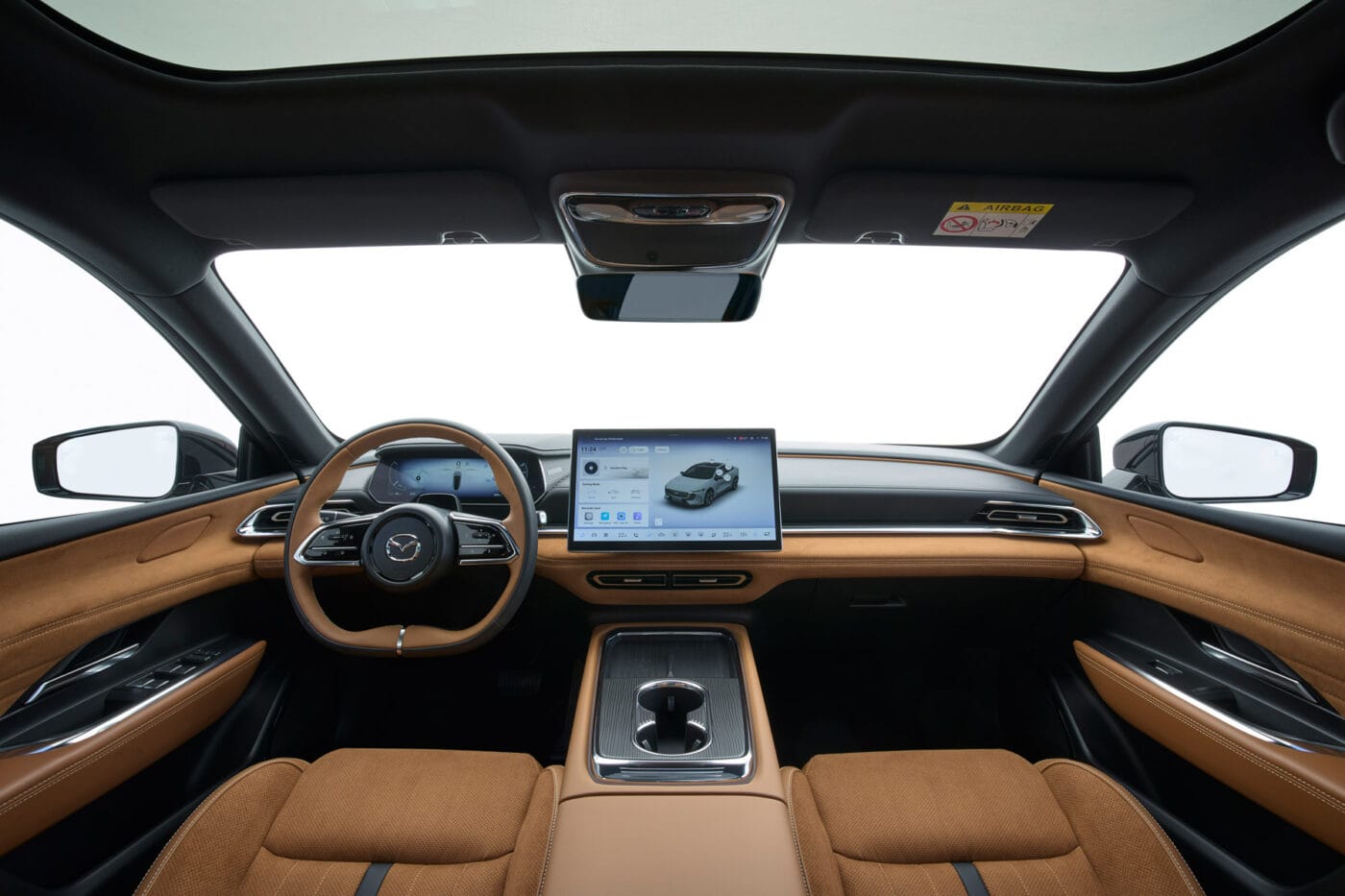
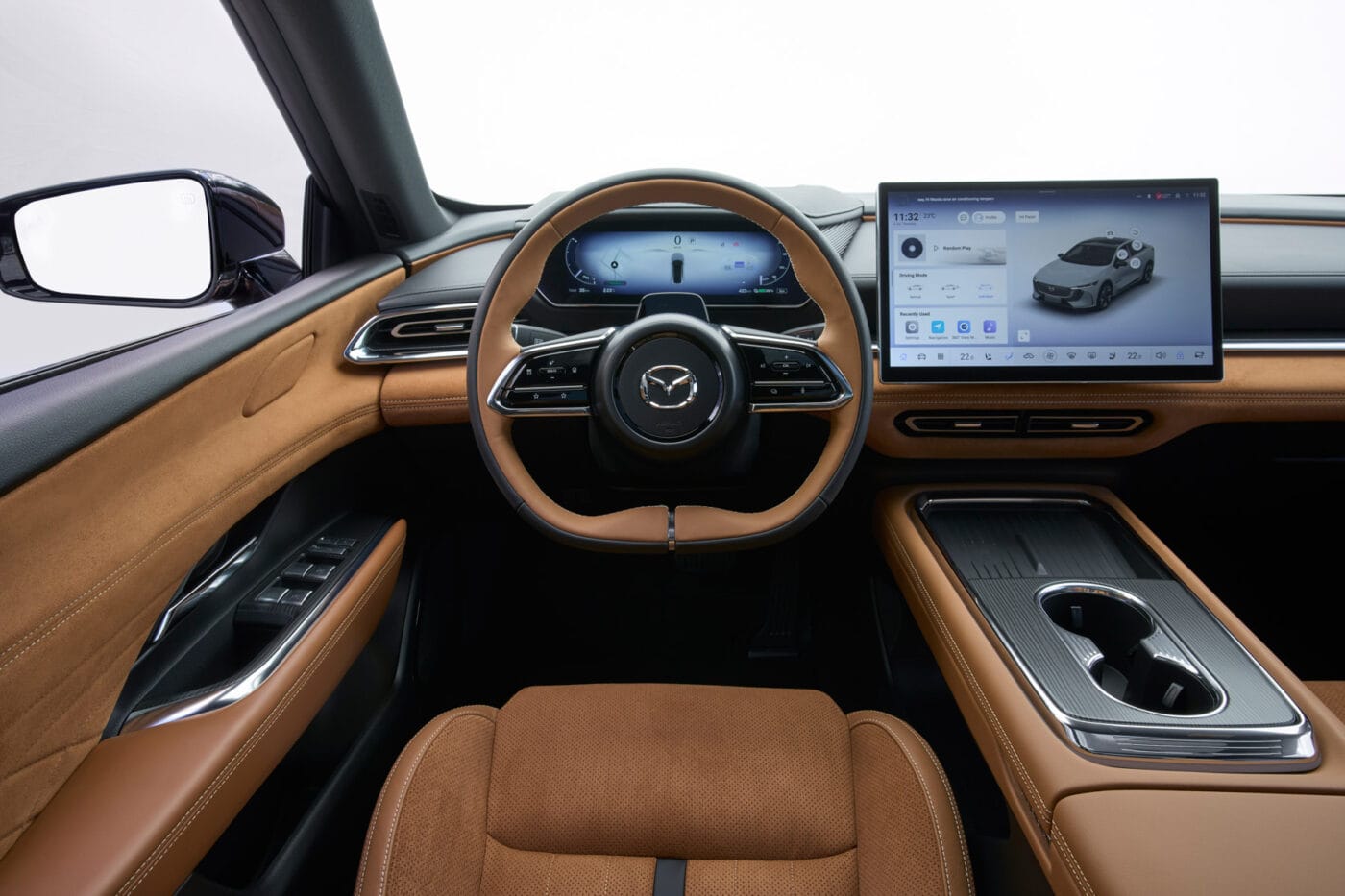
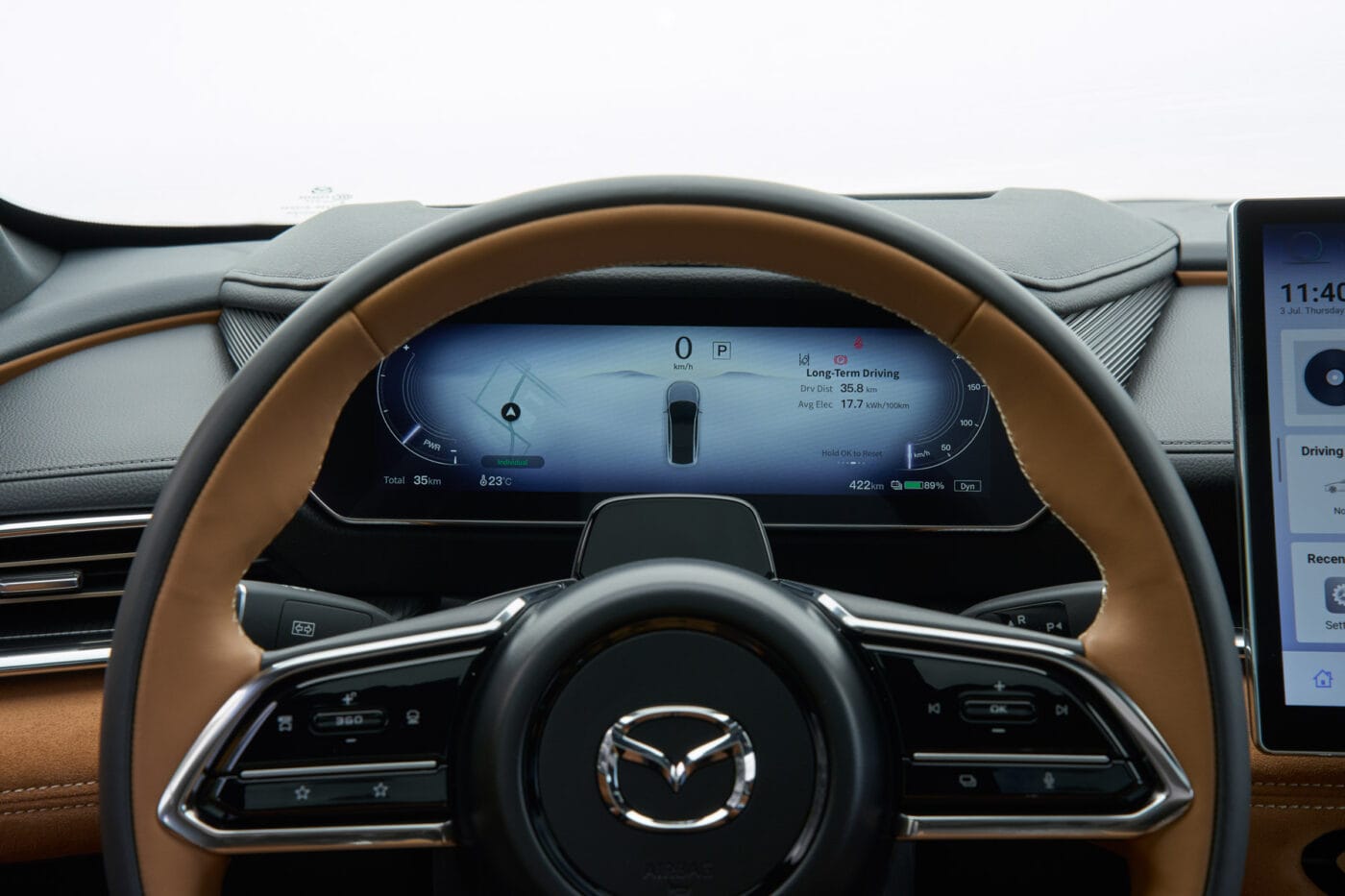

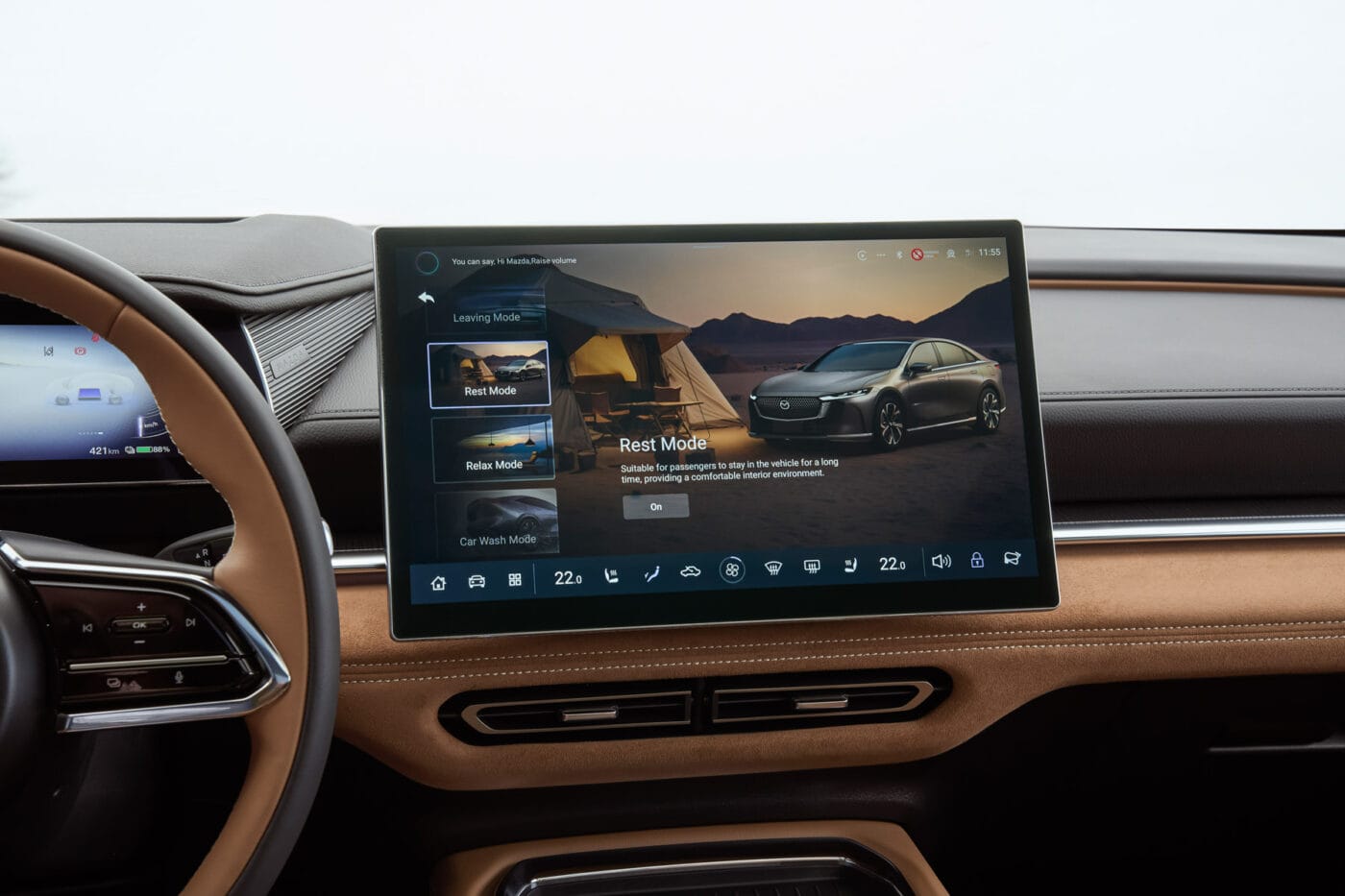
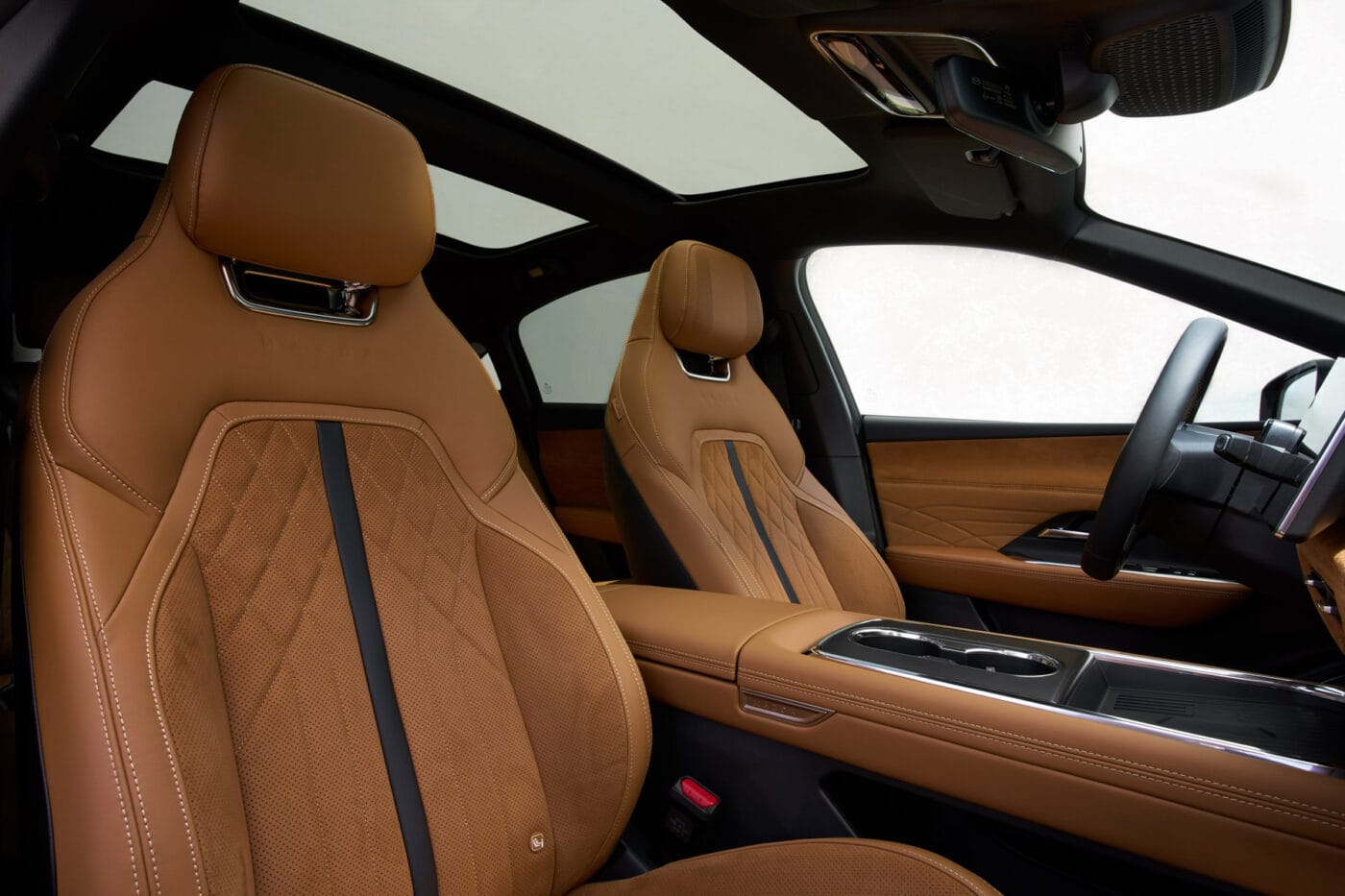
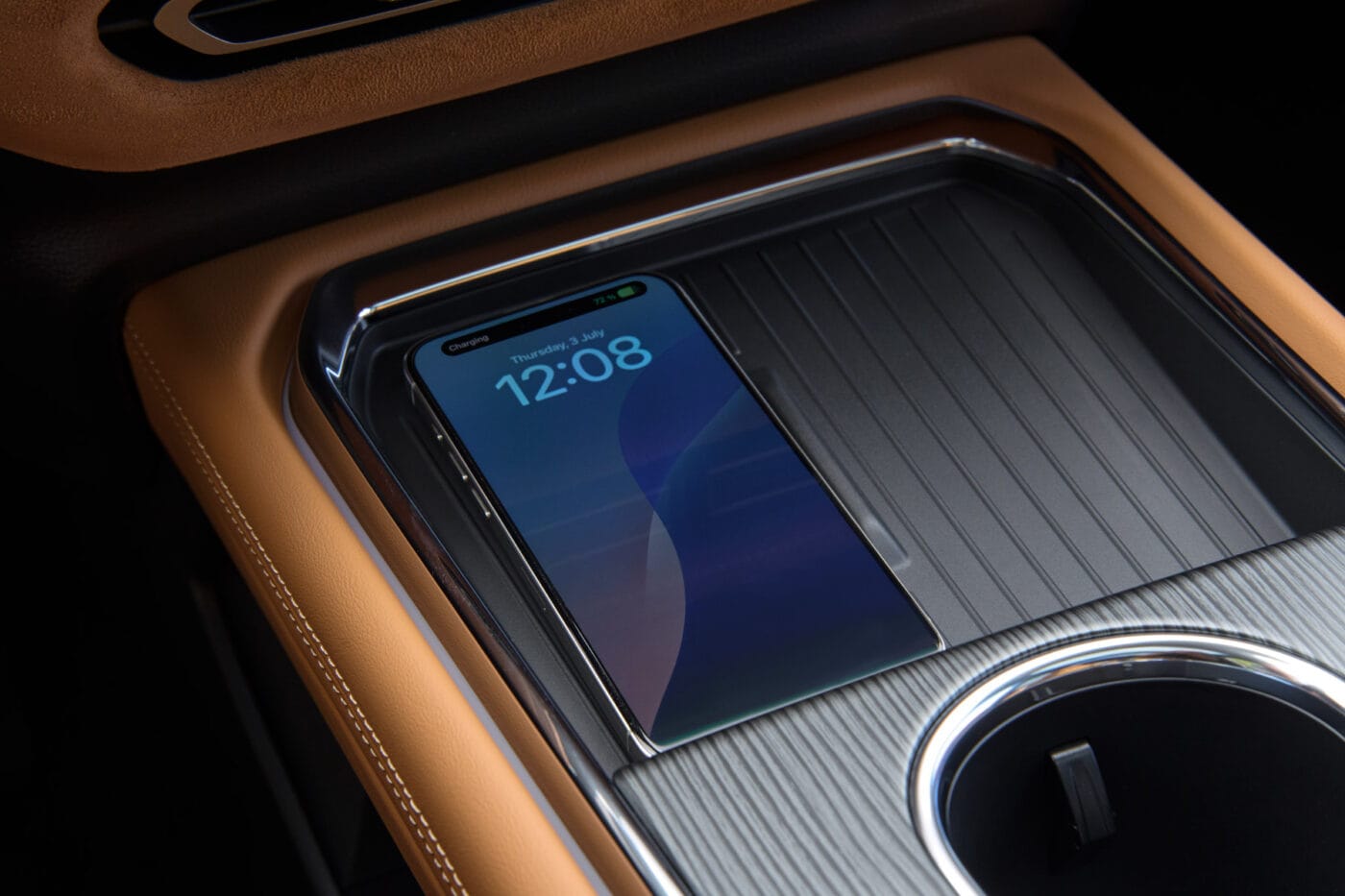
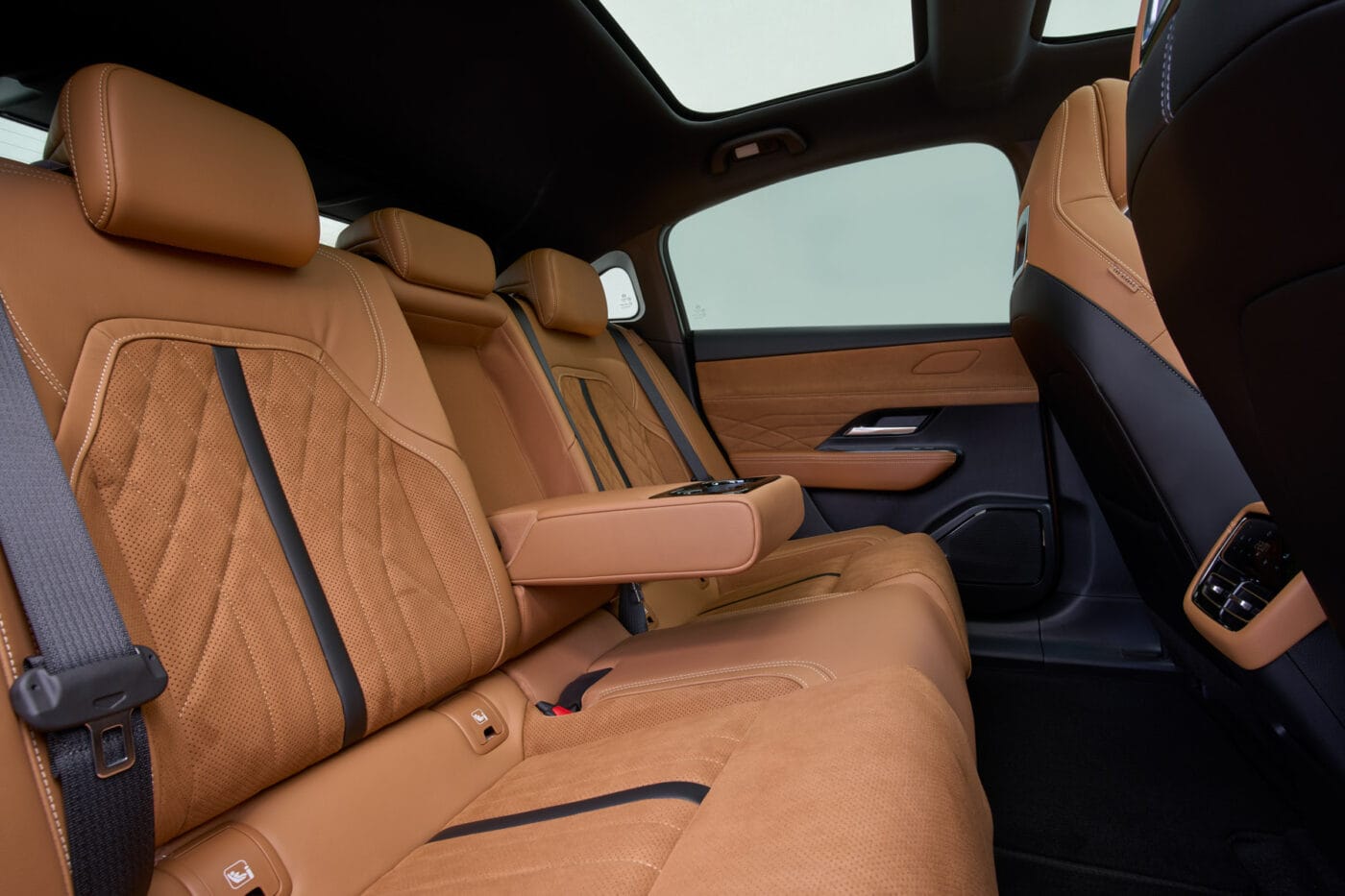
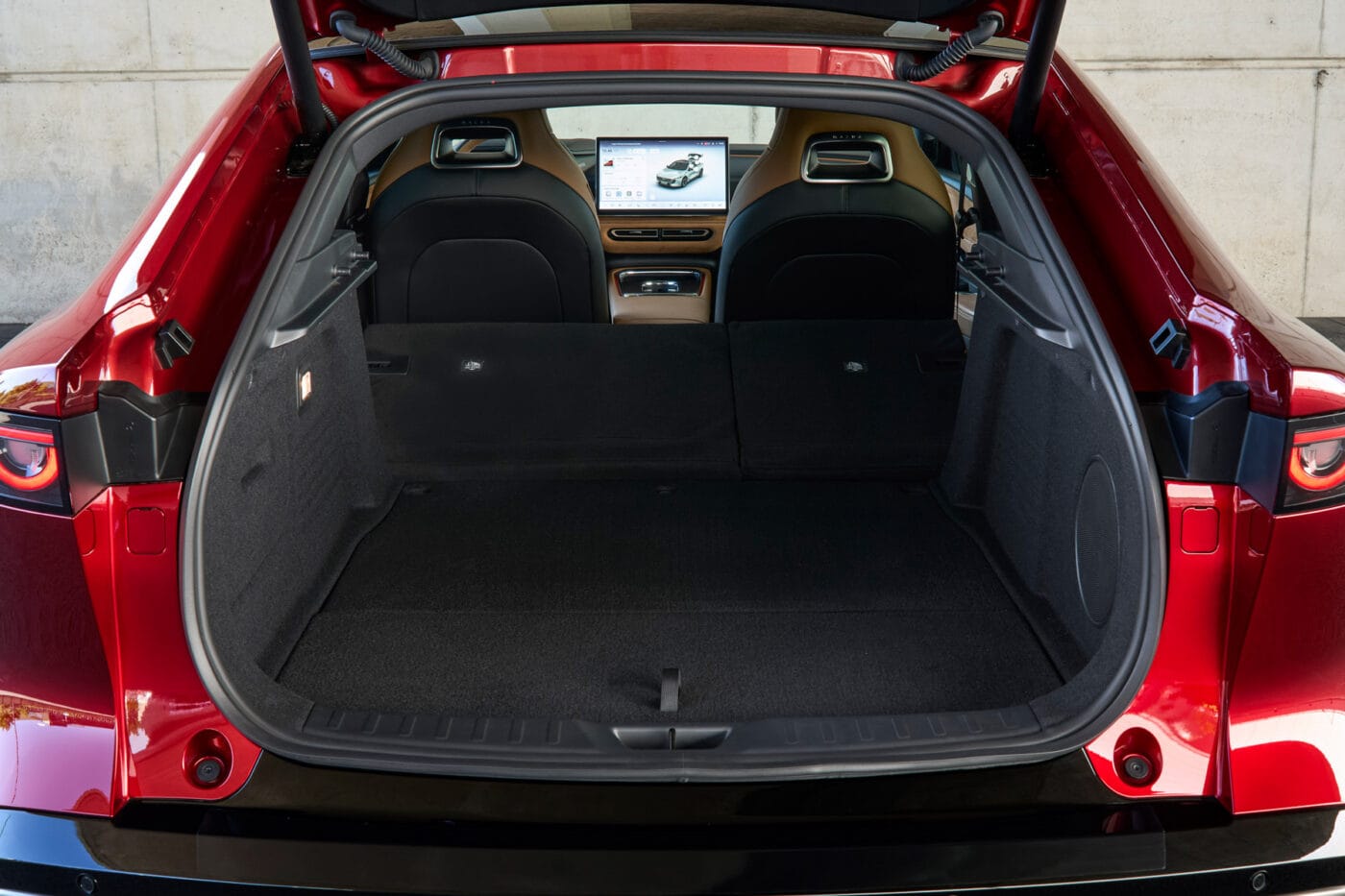
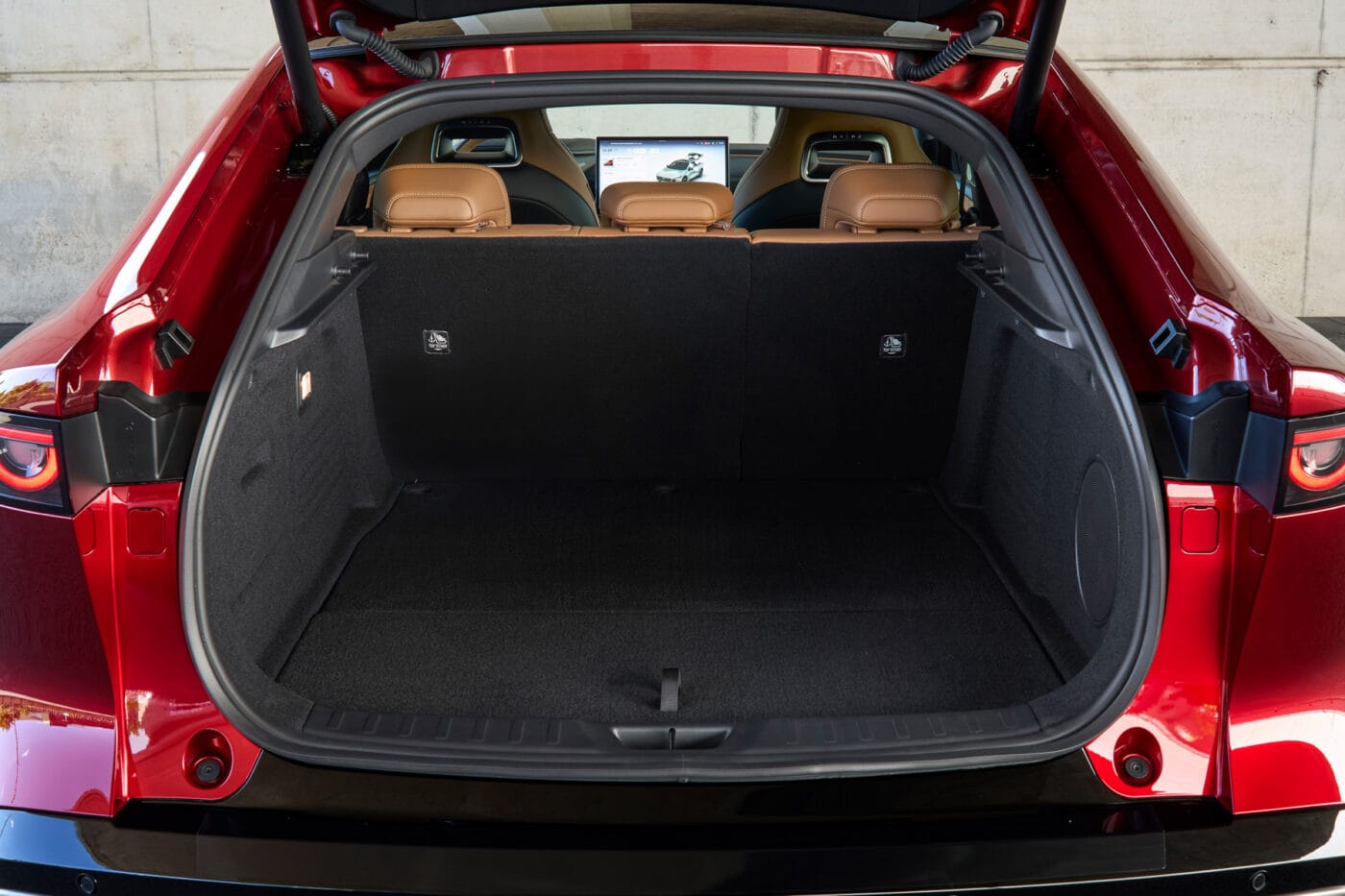
There is potential for simpler trims: The ‘Takumi’ trim is already comprehensive, leaving few wishes unfulfilled. It comes with a 3.3 kW Vehicle-to-Load adapter, 19-inch alloy wheels, a large panoramic glass roof, a 14.6-inch touchscreen, a 10.2-inch digital instrument cluster, a head-up display, gesture control, and a Sony sound system with 14 speakers. Two speakers are integrated into the driver’s headrest, intended to channel navigation prompts solely to the driver or enable discreet phone calls without disturbing other passengers. A simpler sound system, no head-up display, and fabric seats instead of the standard faux leather could make a cheaper trim viable.
The ‘Takumi Plus’ adds brown Nappa leather seats combined with velour imitation, velour surfaces inside, and an electric sunblind for the glass roof. The downside: the two-part blind sits on a bar at B-pillar height, interrupting the glass roof. Without this blind, the ‘Takumi’ trim offers an unobstructed view upwards, with no bar. The wireless charging pad is also ventilated to prevent the phone from overheating while charging.
No Estate in sight, but an SUV is coming
What else? The Mazda6e features several ‘Scenery Modes’ selectable via the touchscreen, such as a relaxation mode (for charging breaks), a car wash mode (which closes all windows and retracts the rear spoiler), and a ‘Leaving’ mode, similar to Tesla’s dog mode or Nio’s pet mode: When briefly leaving the car for a quick errand, the air conditioning stays on, and the display shows a message that the cabin remains comfortably cooled. This allows, for example, a dog to wait safely inside without risk of heatstroke or unnecessary rescue attempts by passers-by.
Space in the front seats is adequate for a car this size – at 4.92 metres, the 6e is certainly not small. Rear legroom is generous, but the seats sit quite low due to the underfloor battery and the (praised) low roofline. At 1.85 metres tall, I found the knee angle rather sharp, as there’s little space to tuck feet under the front seats. Smaller passengers can sit comfortably and travel well in the back. The front seats were very comfortable on the first 100 kilometres, but long-term comfort usually reveals itself only on longer trips.
With 466 litres of boot space, expandable to 1,074 litres with the rear seats folded, the Mazda6e offers decent luggage capacity. Those needing more can order an optional tow bar with a 1,500 kg towing capacity. A practical estate version of the electric saloon is unlikely, as none has been announced so far. Mazda’s next electric debut is scheduled for December: the EZ-60, the corresponding SUV model from the Mazda-Changan partnership.
Conclusion
The Mazda6e is a success and will probably achieve more international success than the MX-30. The car boasts smart design, high-quality build, and extensive equipment. The electric drive impresses with fine tuning and low consumption, meaning that despite the relatively small battery, decent real-world ranges are achievable: this is the preliminary conclusion after the first 100 kilometres. Winter behaviour of LFP batteries can vary greatly, however, and we cannot comment on that yet.
Mazda Germany plans to sell 2,500 units this year and 5,000 in 2026. With annual sales of about 45,000 Mazdas in Germany, that corresponds to roughly 11 per cent in the first full year. What remains open is what might be possible if the Long Range variant offered convincing charging times. Frequent drivers or customers without a home charger often opt for larger batteries, which, with the Mazda6e’s 47-minute charge time, is not a very attractive option.


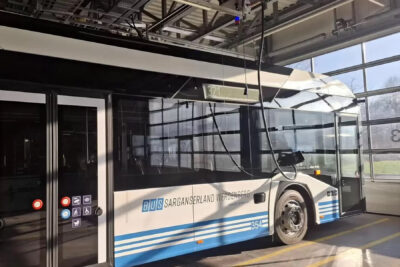

1 Comment